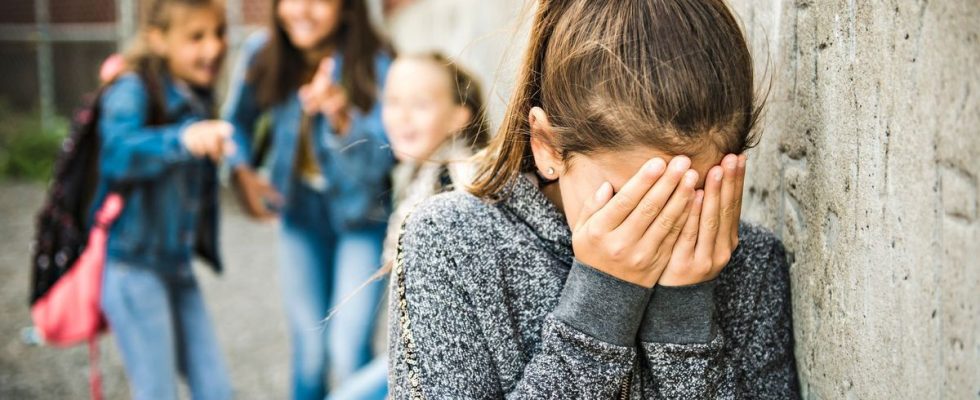Published on
Updated
Reading 3 min.
in collaboration with
Dr. Saverio Tomasella (doctor of psychology and psychoanalyst)
This is a figure that is striking: according to the new Minister of National Education, Nicole Belloubet, one child per class is the victim of harassment. How can we fight against this scourge? Doctissimo interviewed Saverio Tomasella, psychoanalyst, doctor of psychology and author of the book No more harassment, published by Vuibert in 2023.
This is a shocking figure, announced by the new Minister of National Education during a trip to Reims, within a college: one student per class would be the victim of harassment. This figure comes from a survey based on self-assessment questionnaires, which were distributed to more than seven million students in total, from primary to high school.
A figure often “underestimated”
Asked to react to this figure, Saverio Tomasella explains that it is “underestimated”. “Very often, some students do not dare to speak and admit their situation as a harassed child. Other figures, from an IFOP study for the association Marion Fraisse la main tende and the Île-de-France region dating from January 2021, estimate that the figures hover around 20%“.
What are the causes of school bullying?
According to Saverio Tomasella, school bullying has its roots in different causes. “There is the education of certain parents, who push their children to become tough, not to give in, because according to them the world would be unfair and violent and they should be prepared for that. explains the doctor of psychology. “We also noticed that incidents of school violence increased after each confinement, as if the children, isolated, were no longer able to communicate correctly with each other and were, in some way, losing the gymnastics of empathy“.
Other societal causes explain school bullying, according to Saverio Tomasella: “the context of wars, attacks, but also access to violent images through series, films, the Internet… All of this immerses children, even the youngest, in a context of violence.”. There is a sort of trivialization of violence, which young bullies face from a very young age. “We often forget it, but harassers are themselves the harassed victims of someone else. This can be in the direct family environment (parents) or by relatives“.
What are the solutions to adopt in the face of harassment?
“In primary school, 19% of our young people are at risk. 5% of schoolchildren from CE2 to CM2, 6% of middle school students and 4% of high school students are considered victims of harassment” said Nicole Belloubet, who announced two measures.
The first is to “create an annual barometer on harassment” based on these same questionnaires. “They will remain anonymous, but will enable further investigations in establishments when cases are identified.“added Nicole Belloubet. The second measure concerns school nurses, who will have a coordinating role in the fight against school bullying.
Two methods work, according to Saverio Tomasella
Calling on school staff is one of the proven methods to combat this scourge, according to Saverio Tomasella. “The first method is that of shared concern. You must first train an educational team in this method, who can then implement it. A teacher supports the harassed student during a long interview to discuss his situation. Another teacher receives the harassing student(s) and any witnesses, to question them about the situation of the harassed student and ask them if they know more. These short interviews with the harassing students must be repeated over time, closely. We see as the exchanges progress that the students end up having a change of attitude and becoming protective towards the harassed student.” explains the specialist.
The second method is called Somatic Experiencing. “EIt involves asking school psychologists to help bullying children manage certain emotions that are difficult for them, such as fear and anger. By helping them on these specific points, we note a reduction in their harassing behavior.” adds the doctor of psychology, who pleads to help these children. These “proven” methods, according to him, will only work in the presence of trained personnel. What is sorely lacking in educational establishments today.
